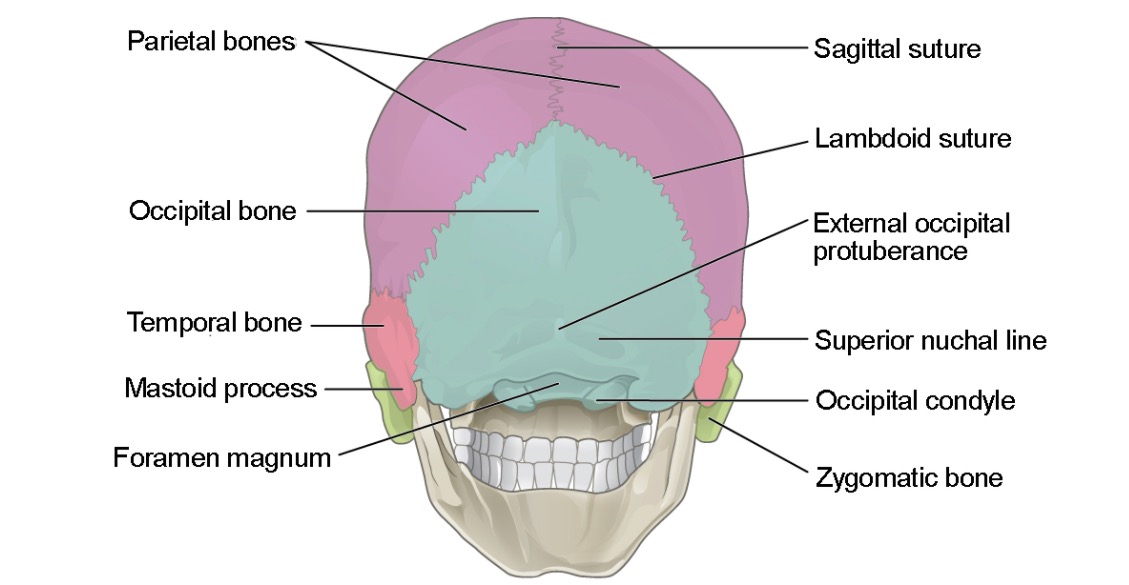Playlist
Show Playlist
Hide Playlist
Occipital Bone
-
Slides Anatomy Occipital Bone.pdf
-
Reference List Anatomy.pdf
-
Download Lecture Overview
00:02 Here's an inferior view so we can look at the occipital bone. 00:06 And the occipital bone has a basilar part anteriorly. 00:11 Then lateral parts. 00:12 And then most posteriorly we have the squamous or flat parts. 00:17 And this is where we find the foramen magnum. 00:20 The opening through which the brainstem becomes the spinal cord. 00:26 If we look internally. 00:28 We see there's this flat portion of the basilar part called the clivus. 00:33 And there's a groove for another sinus here called the inferior petrosal sinus. 00:38 And we flip around to the external surface. 00:41 We see a tubercle for some pharyngeal muscles to attach called the pharyngeal tubercle. 00:48 There's also a little groove here for the sigmoid sinus. 00:53 And externally we have bumps for the attachment to the atlas called the occipital condyles. 00:59 Again this is the part that's going to rest on the vertebral column. 01:03 We also have a condylar canal. 01:06 And a hypoglossal canal for structures to pass through. 01:12 Internally, we have this cruciform eminence where these vertically and horizontally oriented bumps meet. 01:22 And this is we're going to have little fossa for the cerebrum on either side left or right. 01:28 We also more inferiorly of fossa for the cerebellum, which is the smaller portion of the brain. 01:36 And again, we have groups for dural venous sinuses in this case we have the superior sagittal sinus here. 01:41 And running transversely the group for the transverse sinuses. 01:47 On the internal surface where these two groups meet is a bump called the internal occipital protuberance. 01:55 And then the crest that runs from that is called the internal occipital crest. 02:02 We swim around to the external surface. 02:04 We have the corresponding external occipital protuberance. 02:09 So that's a bumped you can feel on the outer surface of the occipital bone. 02:14 And similarly, running from that is the external occipital crest. 02:19 The flat part above that is the occipital plane. 02:23 And then running laterally from the midline we have the inferior nuclear line. 02:27 Which is this attachment point for a lot of muscles. 02:31 We also have superior nuclear line. 02:32 And supreme nuclear line doing similar things.
About the Lecture
The lecture Occipital Bone by Darren Salmi, MD, MS is from the course Skull.
Included Quiz Questions
Which of the following is NOT a part of the occipital bone?
- Mastoid process
- Clivus
- Pharyngeal tubercle
- Cruciform eminence
What divides the concave internal surface of the occipital bone?
- Cruciform eminence
- Clivus
- Pharyngeal tubercle
- Occipital condyle
- Occipital trochlea
Customer reviews
5,0 of 5 stars
| 5 Stars |
|
5 |
| 4 Stars |
|
0 |
| 3 Stars |
|
0 |
| 2 Stars |
|
0 |
| 1 Star |
|
0 |




